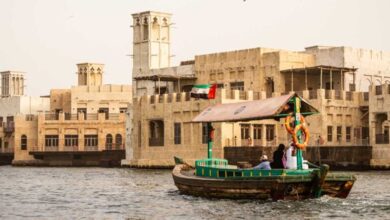selfish rivers

Atul Kanak
In the last few years, there has been a lot of talk about making the country’s rivers pollution free. A lot of money has also been spent on various schemes, but even today the condition remains two and a half years old for nine days. Most of the major rivers of the country are battling with pollution. However, this condition of rivers is not only in India. Rivers in most countries of the world are shedding tears on their condition due to human selfishness and neglect of society. Surprisingly, in the last few years, the story of the plight of rivers is also coming to the fore in those areas of the world, where every drop of water is precious. The latest example in this regard is the Zayndeh river of Iran. It is the largest river in the Iranian plateau and feeds a large part of what is commonly known as a desert in Central Asia.
Troubled by the drying up of the Zayndeh river, people staged a fierce demonstration in the last week of November. Although most of Iran’s rivers are seasonal, Zayndeh had water flow throughout the year until recently. Tomar Samhita was followed in this area till 1960. Tomar was a system of the sixteenth century, according to which water was managed in this area. In desert areas, if there is no code for the management of available water, there is always the possibility of chaos.
But after 1960, it was not possible to follow the Tomar Samhita, because the minimum water requirement of the people started changing due to increasing population and changing lifestyle. Then the industries in the area also started sharing their share in the water. In 1972, the Chadegan Dam was built on this river to generate electricity. Gradually, due to the excessive use of water in the upper area of the river, its lower streams started drying up and it became such a condition that the citizens of that city of Isfahan yearned for the water of this river, which was developed by the proximity of Zayndeh river. .
Although the dryness of a large part of the Jayandeh river is being attributed to the frequent famine conditions, the truth is that human beings are responsible for this, as the flow requirements of the river were ignored while making development plans. Of course, development according to the time is the need of every area, but without saving natural resources, if the preamble of development continues to be written, then life will be surrounded by crises.
The Jarfshan River starts in the Pamir ranges in Tajikistan and after flowing about three hundred kilometers west, enters Uzbekistan, passing through the city of Panzarkent in Tajikistan. Then it flows near Samarkand. The Jarfshan River was once confluenced with the Amu River, but now it disappears into the desert before reaching it.
Its water is extensively exploited for irrigation and modern factories. Due to the flow of the Amu River, the Aral Sea lake in Central Asia is on the verge of extinction. Situated between Kazakhstan and Uzbekistan, this lake has been called the ocean due to its huge size. But since the 1960s, this vast water body has begun to shrink, as the flow of the rivers supplying it – the Amu Darya and the Syr Darya – has been interrupted to meet the needs of urban life.
On the other hand, the water body of the Aral Sea continued to be exploited for irrigating various crops. As a result, this huge reservoir started groaning under the weight of people’s expectations.
In a report in 2020, it was said that in most areas of Iraq, the public is not even getting pure water to drink. In the year 2018, hundreds of people in a developed city like Basra had to be admitted to the hospital because they had to drink contaminated water due to lack of pure water. Iraq’s water system is mainly dependent on the Euphrates and Tigris (Tigris) rivers, but both of these rivers are now drying up. The flow of the Tigris river is being affected due to the construction of a dam by Turkey.
The dissolution of the Soviet Union also adversely affected the condition of the rivers and water bodies of Central Asia. This phenomenon of decentralization of power may have been pleasing to the supporters of democracy, but it negatively affected the way in which different units within the same system met each other’s needs. Kazakhstan, Uzbekistan and Turkmenistan were strong in terms of energy production at the time of the Soviet Union’s existence, while Tajikistan and Kyrgyzstan had substantial water resources.
Under a strong central authority, these republics served each other’s needs, but when all became sovereign, their own interests became paramount. This made it a problem for some republics to manage adequate amounts of electricity in winter and for others to provide water to their farmers. The problem took a worse form due to the deteriorating condition of the two major rivers of the area, Amu and Head.
Last year, farmers in Uzbekistan could not water their crops due to water scarcity, affecting the availability of vegetables and grains, and causing skyrocketing vegetable prices. The water shortage in Samarkand, Uzbekistan, forced the authorities to ration water for some time, as the Jarfshan River did not have sufficient water availability. Turkmenistan is also going through the worst situation in the last decade in terms of water availability.
On the other hand, China has created trouble for other countries of Asia by building indiscriminate dams on rivers. In 2013, a comprehensive survey of water resources in China was conducted. Its report shows that the condition of rivers in China is deteriorating rapidly and in the last sixty years, about twenty seven thousand water streams, small and large, have disappeared. The Mekong River is flowing at its lowest level. Why only China, more than two-thirds of the world’s rivers have been victimized by civilization in the name of development.
The condition is that the Nile River and the Rio Grande River, which are counted among the world’s largest rivers, are now included in those rivers, whose existence is under threat. Yes, the flow of more than a dozen rivers flowing in remote regions like the Arctic is still intact. Perhaps a major reason for this is that development ambitions have not touched these areas.
The condition is that even in a developed country like America, more than half of the rivers and streams are in very bad condition scientifically. When a river is in trouble, not only the humans living around it are in danger, but the creatures and water plants living in the river also struggle with the question of existence.
The post Rivers Ascending to Selfishness appeared first on Jansatta.





